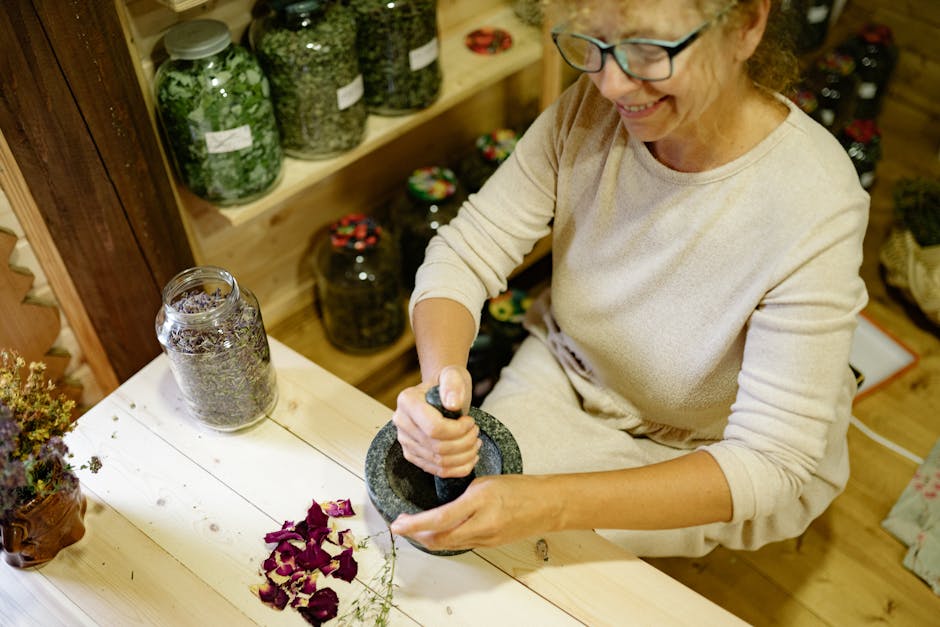Why grind spices at home: Benefits of grinding spices yourself
Grinding spices at home offers a myriad of benefits that elevate the flavor and aroma of your dishes. When you grind spices yourself, you have complete control over the texture, ensuring a fresher and more vibrant taste. Whole spices retain their potency for longer periods compared to pre-ground spices, which tend to lose their flavor over time. By grinding spices at home, you also have the freedom to create custom spice blends, allowing you to experiment with unique flavor combinations that suit your palate. Embrace the art of grinding spices at home and unlock a world of culinary possibilities that will take your dishes to new heights.

Essential equipment for grinding spices at home: What you’ll need
When it comes to grinding spices at home, having the right equipment is essential for achieving the best results. While a mortar and pestle can do the job, investing in a spice grinder can make the process much easier and more efficient. A spice grinder is specifically designed to grind spices to a fine powder, ensuring that the flavors are released and evenly distributed. Look for a grinder with sharp, stainless steel blades and multiple grinding settings to suit your specific needs. Additionally, consider investing in a dedicated coffee grinder for grinding larger quantities of spices. With the right equipment, you’ll be able to unlock the full potential of your spices and elevate your culinary creations to new heights.
Choosing the right spices: Which spices are best for grinding at home
Choosing the right spices is essential when it comes to grinding them at home. While many spices can be ground, some are better suited for this process than others. Whole spices such as cinnamon sticks, peppercorns, and cloves are ideal candidates for grinding as they retain their flavors and aromas much better when freshly ground. Additionally, spices like cumin seeds and coriander seeds can greatly benefit from grinding, as it releases their natural oils and intensifies their flavors. On the other hand, spices like dried herbs and ground spices, such as paprika or turmeric, are best used as they are, as grinding them may result in a loss of flavor. By choosing the right spices for grinding, you can elevate your dishes with the vibrant and robust flavors that only freshly ground spices can provide.
Whole spices vs. pre-ground spices: Pros and cons of each
When it comes to grinding spices at home, the choice between whole spices and pre-ground spices can greatly impact the flavor and aroma of your dishes. Whole spices, such as peppercorns and cumin seeds, have a longer shelf life and retain their flavor and potency for a longer period of time. Grinding them fresh at home ensures that you’re getting the maximum flavor out of each spice. On the other hand, pre-ground spices offer convenience and save time in the kitchen. However, they tend to lose their flavor more quickly and may not deliver the same intensity as freshly ground spices. By understanding the pros and cons of each option, you can elevate your cooking to new heights and create dishes that are bursting with vibrant flavors.
Grinding methods: Different ways to grind spices at home
Grinding spices at home can elevate your culinary creations to new heights, and understanding the various grinding methods is key to achieving the perfect flavor profile. While many opt for electric spice grinders, there are alternative ways to grind spices that can provide unique results. For instance, a mortar and pestle offers a hands-on approach, allowing you to control the texture and release the essential oils for maximum flavor. On the other hand, a coffee grinder can efficiently grind larger quantities of spices, but be cautious not to over-grind and risk losing the delicate aromas. By exploring different grinding methods, you can customize your spice blends and unlock a world of tantalizing tastes in your own kitchen.
Techniques for grinding spices: Tips for achieving the perfect grind
Grinding spices at home can elevate your dishes to a whole new level, but achieving the perfect grind requires the right techniques. One important tip is to toast the spices before grinding them. This not only enhances their flavor but also makes them easier to grind. Another technique is to use a mortar and pestle for a more hands-on approach, allowing you to control the texture and intensity of the spices. Alternatively, you can use a spice grinder for a quicker and more consistent grind. Whichever method you choose, it’s crucial to clean your grinder or mortar and pestle thoroughly between different spices to avoid flavor contamination. With these tips and techniques, you can unlock the full potential of your spices and take your culinary creations to new heights.
Storing ground spices: How to keep them fresh and flavorful
Storing ground spices properly is key to preserving their freshness and flavor for longer periods of time. After grinding your spices at home, it is important to transfer them to airtight containers to protect them from moisture, light, and air exposure. This will help prevent the spices from losing their potency and becoming dull in taste. Additionally, storing spices in a cool and dark place, such as a pantry or spice cabinet, will further extend their shelf life. By following these simple steps, you can ensure that your ground spices maintain their vibrant flavors and elevate your dishes with their aromatic essence.
Spice blends and recipes: Ideas for using freshly ground spices in your cooking
Spice blends and recipes are the perfect way to showcase the vibrant flavors of freshly ground spices in your cooking. By grinding your own spices at home, you have the freedom to create unique blends tailored to your taste preferences. Experiment with combinations like garam masala for Indian dishes, za’atar for Middle Eastern cuisine, or herbes de Provence for a touch of French elegance. These homemade spice blends not only add depth and complexity to your dishes but also allow you to control the quality and freshness of the ingredients. Elevate your cooking to new heights by incorporating the bold flavors of freshly ground spices into your favorite recipes.
Troubleshooting common issues: Solutions for common problems when grinding spices
Troubleshooting common issues when grinding spices can save you time and frustration in your quest for the perfect flavor. One common problem is spices clumping together during the grinding process, which can result in uneven texture and taste. To prevent this, make sure your spices are completely dry before grinding and consider adding a small amount of rice grains to the grinder to absorb moisture. Another issue is the loss of aroma and flavor due to overheating the spices. To avoid this, grind small batches at a time and pulse the grinder instead of continuously running it. By being aware of these common problems and implementing these simple solutions, you can ensure that your homemade spice blends are bursting with vibrant flavors.
Final tips and summary: Key takeaways for successfully grinding spices at home
After following all the steps to grind spices at home, there are a few final tips and key takeaways to ensure success. Firstly, it is important to clean your grinder thoroughly after each use to prevent cross-contamination of flavors. Additionally, storing your ground spices in airtight containers away from heat and sunlight will help preserve their freshness and potency. Lastly, remember to start with small batches of spices and experiment with different combinations to find your preferred flavor profiles. By grinding spices at home, you have the freedom to create custom blends that elevate your cooking to new levels of deliciousness.
